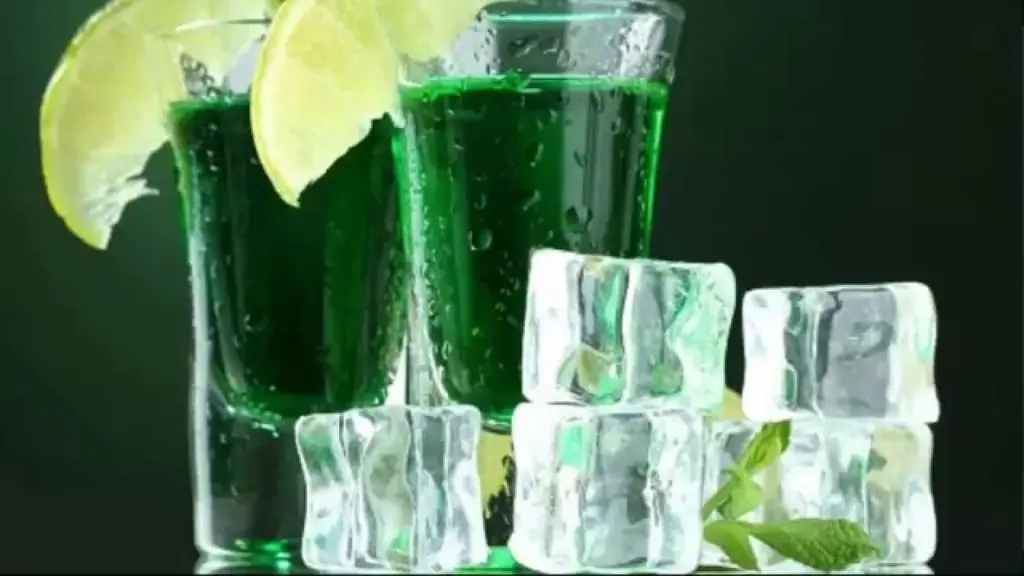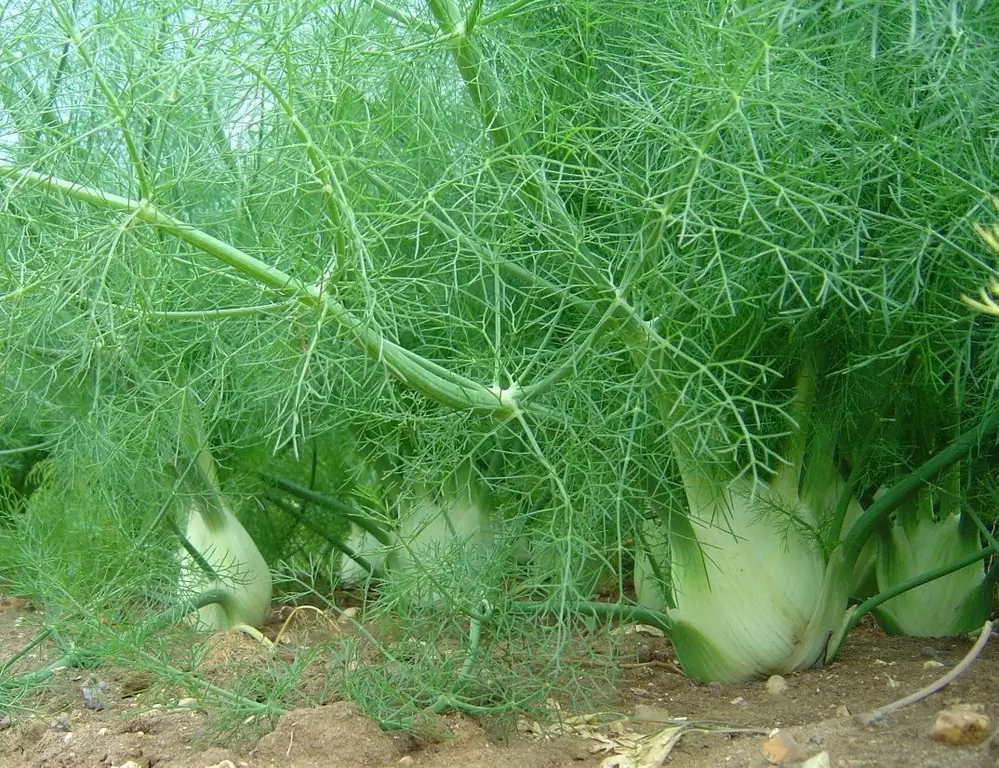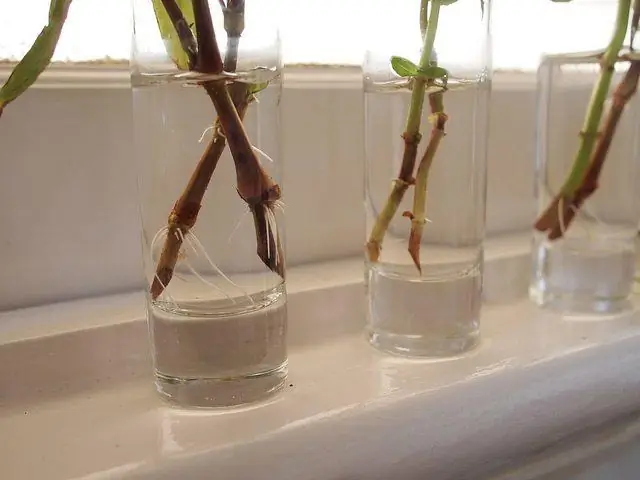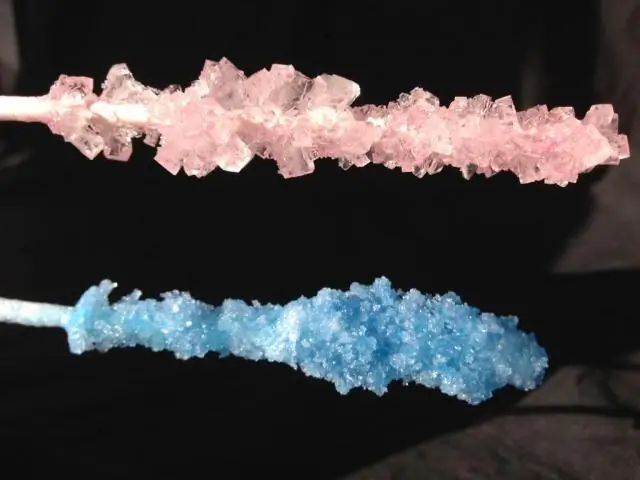
Table of contents:
- Author Bailey Albertson [email protected].
- Public 2023-12-17 12:53.
- Last modified 2025-01-23 12:41.
How to sharpen a ceramic knife at home

Ceramic knives have long ceased to be a novelty. Today, many housewives prefer them after comparison with traditional steel kitchen tools. One of the arguments in favor of a ceramic knife is that it needs to be sharpened less often than a regular knife. However, over time, the blade becomes dull, and sooner or later it will have to be sharpened. The usual tools will not work for this. How and what to sharpen a ceramic knife at home without spoiling it, we will tell you in our article.
Content
- 1 The difference between ceramic knives and steel
-
2 How to sharpen correctly
2.1 Single-sided and double-sided sharpening
-
3 Sharpening methods
- 3.1 Electric grinder
-
3.2 Electric sharpener
3.2.1 Video: how to sharpen a ceramic knife using an electric sharpener
- 3.3 Hand sharpener
- 3.4 Diamond paste
- 4 Video: how to sharpen a ceramic knife at home
The difference between ceramic knives and steel
Ceramic knives look nice and elegant, while they do not scratch, do not dull for a long time and have high cutting properties. A ceramic knife will easily cut into even and thin slices such products that are inconvenient for cutting, such as tomatoes, eggs or cheese. It does not leave a metallic taste on food, does not corrode, and is practically weightless.
However, a ceramic knife requires careful handling. For example, in no case should they try to chop bones or frozen food, in this case you risk getting a chip on the cutting surface, or even breaking a knife. For the same reason, it is not recommended to work with a knife on ceramic surfaces.

A set of ceramic knives for the kitchen requires sharpening no more than twice a year
The blade of ceramic knives is made of zirconium dioxide, which is molded and calcined in ovens at temperatures above 1500 ° C. The result is a very strong material, second only to diamond in hardness. With all the indisputable advantages of a knife due to this property, it also has disadvantages. One of them is the laborious selection of sharpening materials. Obviously, very hard things can only be sanded with something even harder. That is why most devices designed for sharpening metal knives become unsuitable for ceramic products.
Even a knife of the highest quality gradually degrades the cutting ability and needs sharpening. In addition, during use, the blade may become covered with small chips, which are removed by sharpening.
The metal knife is sharpened frequently. In this case, additional sharpening does not in any way affect the service life of the product. With its ceramic counterpart, the situation is completely different. During the entire period of operation, the ceramic knife can be sharpened only a few times! Delicate material wears out and crumbles, so in those moments that you will sharpen it, try to do everything as correctly as possible.
When using electric emery for the ceramic knife, only diamond-coated discs are suitable. The blade of the knife is not pressed tightly against the wheel during grinding, which means that the whole process will take you longer than if you were sharpening a knife made of metal.
How to sharpen correctly
Despite the fact that the ceramic knife is made of a very hard material, it is nevertheless quite fragile. That is why sharpening such a knife at home is a risky business. Therefore, if you are not sure about your sleight of hand, you may want to use the services of a specialized workshop. If you are not afraid of difficulties and strive to save money, try one of the ways to sharpen ceramic knives at home. However, keep in mind that you still cannot do without special devices, which also cost some money.
Single-sided and double-sided sharpening
Before you start sharpening, take a close look at the knife blade and determine the type of blade. The traditional ceramic knife, originally from Japan, is designed to create a particularly thin and precise cut. This knife has a flat blade that is sharpened on one side only. Today, ceramic knives, addressed to the European consumer, are often equipped with the usual lenticular (wedge-shaped) blades. Such a blade is sharpened on both sides. A double-edged knife is more versatile: it can be used by both right-handers and left-handers, and it will be more functional in the kitchen.

Ceramic knives with different types of blades
When purchasing a specialized sharpener for ceramic knives, pay attention to what type of blade it is intended for. A number of expensive models of Japanese manufacturers are designed for both single-sided and double-sided sharpening.
For one-sided sharpening, the wedge side is first grinded until a uniform burr forms on the cutting edge. Then the blade is turned over to the other side to grind off the resulting burr.

Single-sided ceramic knives
With double-sided sharpening with the help of a coarse-grained stone, first grind one surface of the blade until a burr appears, after which the knife is turned over and sharpened symmetrically during the same time. A fine-grained stone is used at the end to give the blade its final sharpness.
Sharpening methods
Electric grinder
To sharpen a ceramic knife with a machine, you need to purchase two diamond-coated grinding wheels: 80 microns for preliminary sharpening and 40 microns for final grinding of the blade.

The ceramic knife is sharpened with a diamond disc
Conditions for correct sharpening:
- low speed;
- minimum beating of the circle, rotation in one plane;
- firm, but not reinforced pressing of the blade to the grinding surface;
- smooth movement from the base to the edge of the blade (repeat 3-5 times);
-
for double-sided sharpening, the last action should be performed on the second side of the blade.

knife sharpening scheme Sharpening is carried out by moving from the base of the knife to the edge
Electric sharpener
The manufacturers of ceramic knives have made sure that they can be sharpened professionally at home. Electric and manual sharpeners for ceramic knives are produced in Japan, USA, and the cost of such devices is from 3,500 rubles. Chinese counterparts are much cheaper, but there will be no one to ask about the quality.

Using an electric sharpener doesn't require any effort from you
The electric sharpener is equipped with two diamond-coated discs, which are powered by a rechargeable battery or batteries. It often automatically adjusts to the thickness of the ceramic blade, builds the required sharpening angle and performs it quickly and efficiently. All you need to do is insert the knife into the sharpener according to the instructions. In addition to its main function, this sharpener also removes small chips. A number of models are equipped with a device for cleaning the working surface from crumbs and dust. Of course, the purchase of such a device is advisable in the case when the knife is of great value. Proven brands: ChefsChoice (USA), Kyocera (Japan).
Video: how to sharpen a ceramic knife using an electric sharpener
Hand sharpener
Hand sharpeners work in much the same way as electric sharpeners, only the discs are set in motion by your actions. The sharpening angle has already been adjusted. This sharpener is cheaper, but it will take patience and some skill to get the job done. The blade must be placed in the slot for the blade on the sharpener and move the knife along the discs with smooth movements.

Manual ceramic knife sharpener
For manual sharpening of ceramic knives, we also offer diamond-coated bars. They are produced in the form of a file and require independent determination of the angle for sharpening. Recommended only for experienced and skilled craftsmen.

Diamond file for hand sharpening requires maximum dexterity and precision
Diamond paste
Diamond paste with an abrasive less than 5 microns is used to grind and sharpen the cutting surface of the knife during the final lapping process, after the main part of the process is completed. To do this, the paste is applied to a flat surface (cardboard, leather) and the blade is polished over the paste layer with measured movements. This process is laborious and takes time, but the result will delight you.
Video: how to sharpen a ceramic knife at home
The ceramic knife is pleasant to use. With proper care and careful handling, it will last for years. Several times during this time you will have to resort to sharpening the product. The purchase of special tools for this is justified in the event that your knives are expensive and you have several of them. Otherwise, it is more expedient to seek the services of a specialist. However, if you set out to sharpen ceramics at home, our tips will come in handy. Remember that sharpening a ceramic knife will take a lot of time, accuracy and care.
Recommended:
Recipes For Making An Absinthe Cocktail At Home, How To Cook, Video

Step by step recipes for making absinthe at home. Required ingredients, their ratio. Manufacturing with and without distillation
Growing Fennel From Seeds (including Vegetable Seeds) At Home And In The Garden + Photo And Video

Practical tips for growing fennel from seed. Fennel species, varieties suitable for growing in the middle lane
How To Grow A Peach From A Stone In The Country Or At Home + Video

Growing a peach from a stone at home. Step-by-step descriptions of growing and transplanting methods. Plant care
How To Properly Grow A Crystal From Sugar At Home: Recipe + Video

Ways to grow sugar crystals at home. Necessary materials and tools, a detailed description of how to grow on a stick, string
How To Sharpen Meat Grinder Knives At Home + Video

How can you sharpen meat grinder knives: different ways. Rules and nuances of sharpening at home. Video
